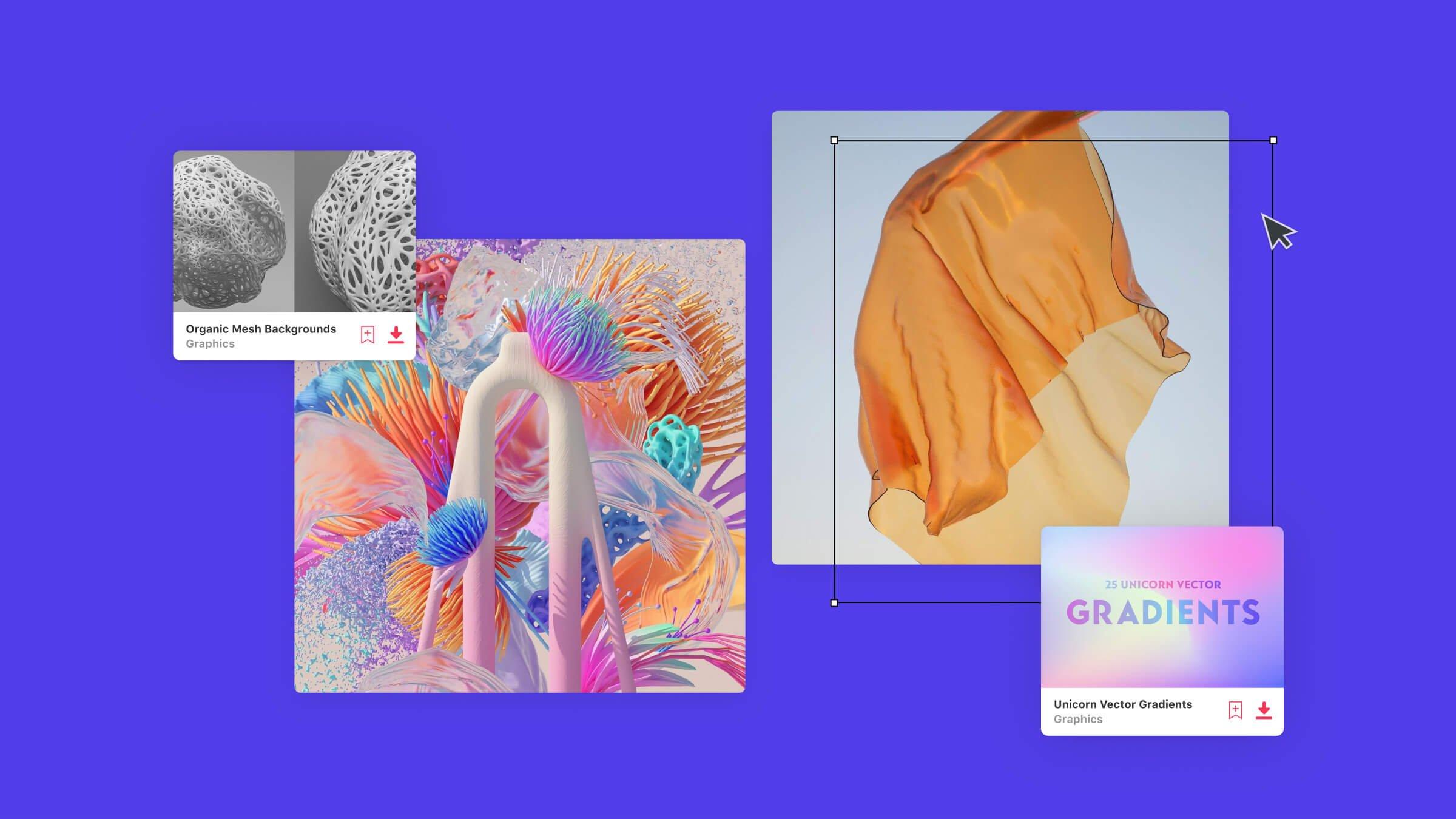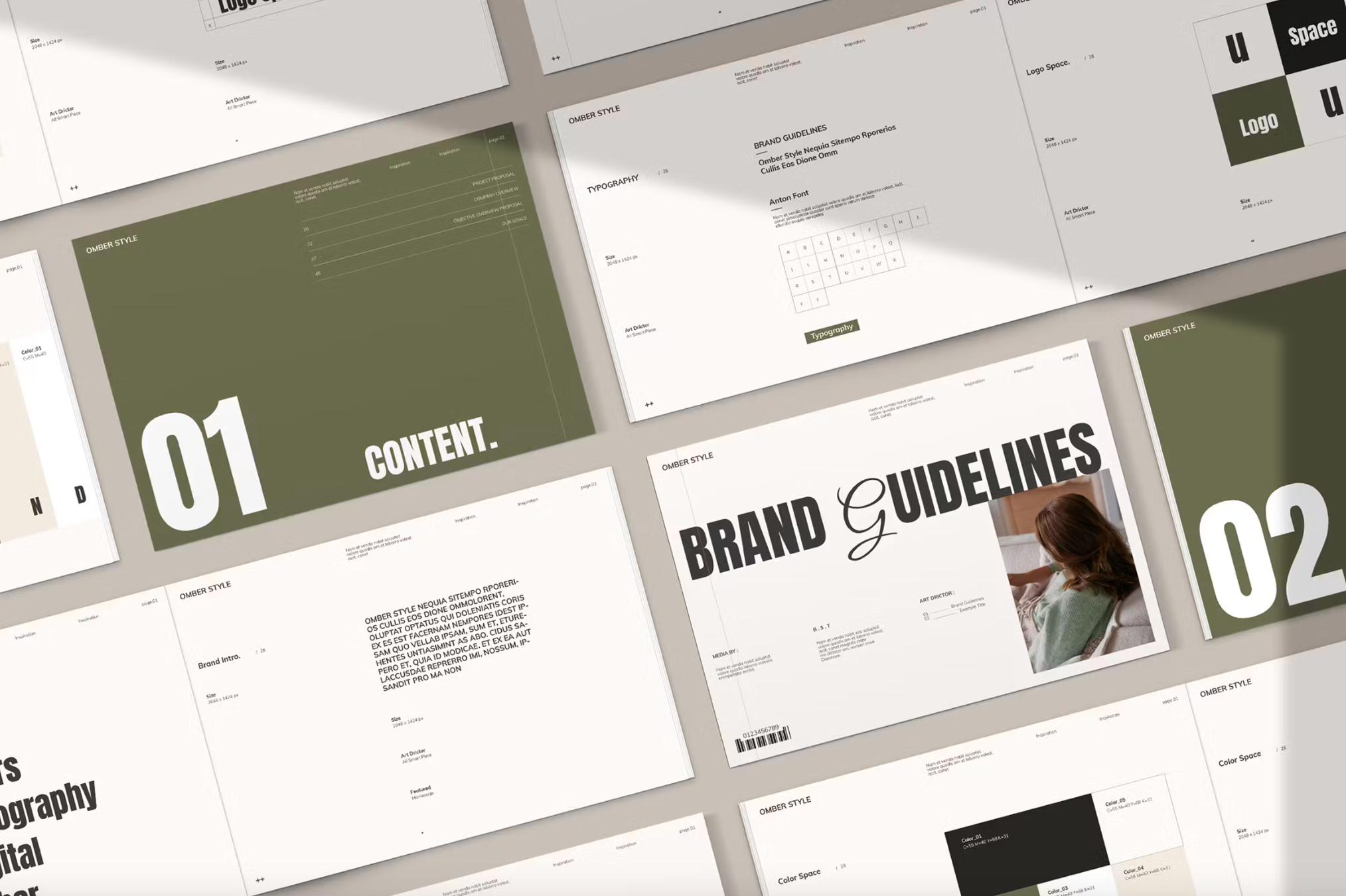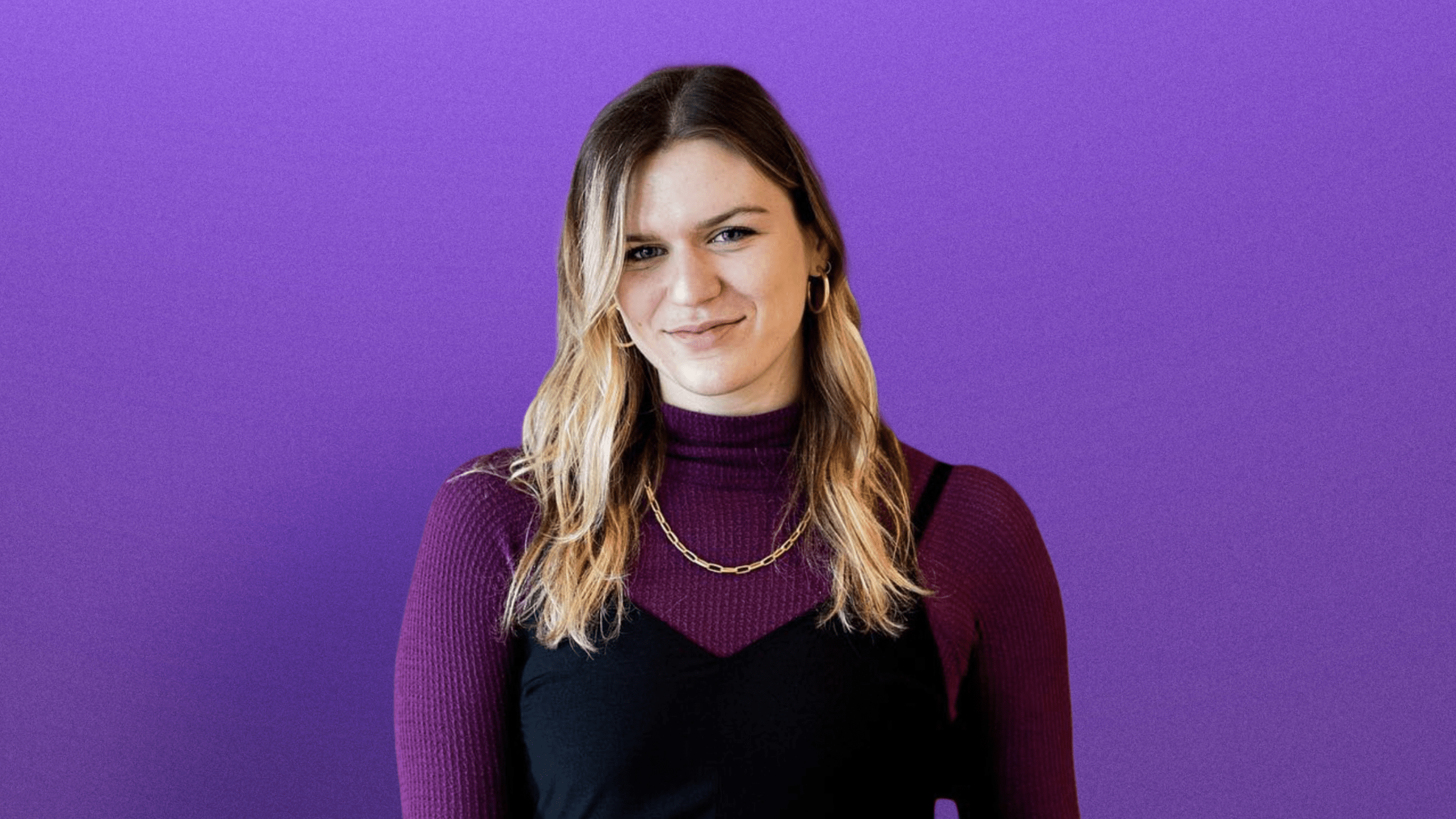We chat with talented 3D artist and designer Khyati Trehan to learn how she uses Envato Elements to create eye-catching digital art…

Talented 3D artist and designer Khyati Trehan is a true creative connoisseur. With a collection creative talents including everything from typography and branding to abstract 3D art and AR design, Khyati’s incredible work is known for its abstract, emotive, colorful and textural elements. Taking a philosophical and experimental approach to design, Khyati’s mission is to create meaning by finding links between seemingly unrelated things – hunting for invisible strings of connection.
By day, Khyati is a Senior Communication Designer at IDEO Munich. But by night, she’s an independent visual artist who allows her creativity to flow and her subconscious mind to work its magic. In addition to sharing her creations with her 18.7k Instagram followers, this talented designer has also worked with big-name clients such as Samsung, Absolut, Apple, Adobe, Instagram and Snapchat, and her work has been featured by the likes of WIRED, Vice and even the Wall Street Journal.
We sat down for a chat with Khyati to learn how she uses Envato Elements to create her work, as well as her top tips, tricks and advice for creating eye-catching digital art that truly connects…
What’s your artistic background and how did you get into digital art?
I didn’t really know design even existed as a discipline until I heard about the National Institute of Design (NID), Ahmedabad, through seniors in school. I decided to wing it and somehow got in. NID put emphasis on sharpening your senses, building a strong foundation and redefining design from decoration to creative problem solving. Since graduating I’ve been catapulting from one corner of design to another, spanning everything from type design to branding to publication design. Now, I’m working as a senior communication Designer at IDEO Munich and moonlighting as a 3D visual artist in whatever little time I can squeeze out of a day.
I started dabbling in digital art a few years back, when I took a break from working at studios and managed to have a lot of time on my hands. The more I learnt, the more I was drawn to it. It felt like magic, except that spells sounded more like ‘splines and booleans’. You can whip up worlds that are close to reality out of thin air, just as well as you can create worlds far from it, by distorting reality. Greyscalegorilla has a series covering the basics, and then there was no stopping me really with all the tutorials and Patreons peppered across the internet.
I accelerated my learning by taking up projects that I thought I wasn’t equipped to do, and then racing to learn what I had just signed up to deliver.
What’s the mission or meaning behind your work?
I love creating meaning by finding relations between seemingly unrelated things. As if every object, person and concept on the planet is connected by invisible strings that you walk through, and you suddenly trip over one and that connecting string becomes visible. With my personal work, I try to draw parallels and hunt for invisible connections that others don’t see till you point them out.
What inspires your work?
Everything and everyone within a 20 mile radius is ripe for the picking! My style of work is brief dependent, and is fueled by the places and people I’m designing for. I get to be a little more selfish with my personal work, looking inwards and enjoying the craft for craft’s sake. In the words of artist Zima Blue, ”To extract some simple pleasure from the execution of a task well done.”
How would you define your digital art style?
My work is often abstract, emotive, colorful and textural. With 3D art, you’re essentially whipping up spaces and objects that are close to reality, which is why tactility has a huge role to play in my style.
How do your ideas get from your imagination to Instagram?
My design process varies depending on who I’m working for. At IDEO – where I bring clarity, emotion, movement and identity to content – it all begins with diving headfirst into the context we’re designing for and the people within it. In my personal work, I allow myself to flow and let the subconscious mind do its magic!
How does Envato Elements help you create your work?
Because of the volume of resources Elements has to offer, there are lots of serendipitous moments. I run into assets I wasn’t initially looking for, and this discovery inspires new ideas. For someone who works with color and texture so much, pattern libraries get a lot of use in my work, especially when I’m making a material/shader.
What types of items do you use the most?
So far it’s been pattern libraries. The last artwork I made used images from a fabric blueprint texture library. I used them for a piece where I rendered a cloth.
What other programs, tools and techniques do you use to create your work?
I move from paper to laptop and back a lot. I toggle between Adobe Suite, Cinema 4D and Figma on an average day. When I’m addressing a specific brief, or have a composition in mind that my hands will do a better job of coming up with, I sketch. But when I’m exploring, especially in 3D, I go straight to Cinema4D.
Would you recommend Envato Elements to other digital artists?
Absolutely! It’s always helpful to have a headstart in the design process. Having access to a large number of assets is a major time saver.
Where do you sell or promote your work?
I license my work on AvantForm, a platform for 3D artists, as well as Society6 and Unique for art prints. My work’s been featured in magazines and blogs including WIRED, Vice, Wall Street Journal, Communication Arts, Fast Company, Creative Review, and WePresent to name a few.
What else do you do when you’re not making art with Envato? Do you have any exciting creative projects on the go at the moment?
I’ve been doing AR experiments with Snapchat and their product Spectacles. Spectacles are smart glasses that allow you to capture 3D videos handsfree. 3D videos are a perfect playground for Augmented Reality. I’m looking forward to collaborating with my sister and musician Kavya Trehan and integrating 3D animations into film.
What’s the biggest learning you’ve had from becoming a digital artist?
I constantly remind myself that there is no one right way to do something, and by doing so, I feel braver. I also think that ideas come from training your brain’s muscles to prevent falling into a familiar groove, to ultimately become good at making connections that don’t seem obvious at first.
What are some of the top digital art trends you’re loving at the moment?
Crypto art is taking over the design scene at the moment and helping rethink art and art economies. It’s a complex subject that takes a while to swallow, but it uses blockchain technology to essentially introduce scarcity and value in the form of a non fungible token, that can be bought by collectors and resold, with the artist getting a cut of each sale. While the prospect is really exciting, crypto art has a grave negative ecological impact and is still far from being the promised land.
Do you have any special digital art tips, tricks or hacks that you swear by?
I repurpose a lot! Whenever I’m out of ideas or drawing a blank, I start with an old piece and build on it till it looks nothing like its roots. It speeds things up and shows me how far I’ve come.
Feeling inspired? There’s more where that came from! Check out this Made with Envato Interview with collage queen Frankie Lee Mwah, explore imagination with Emilio Rios or create art without limits with James Bahadur. And head over to Elements to start creating today!
Khyati is an Envato partner. All opinions provided within this interview are her own.






























